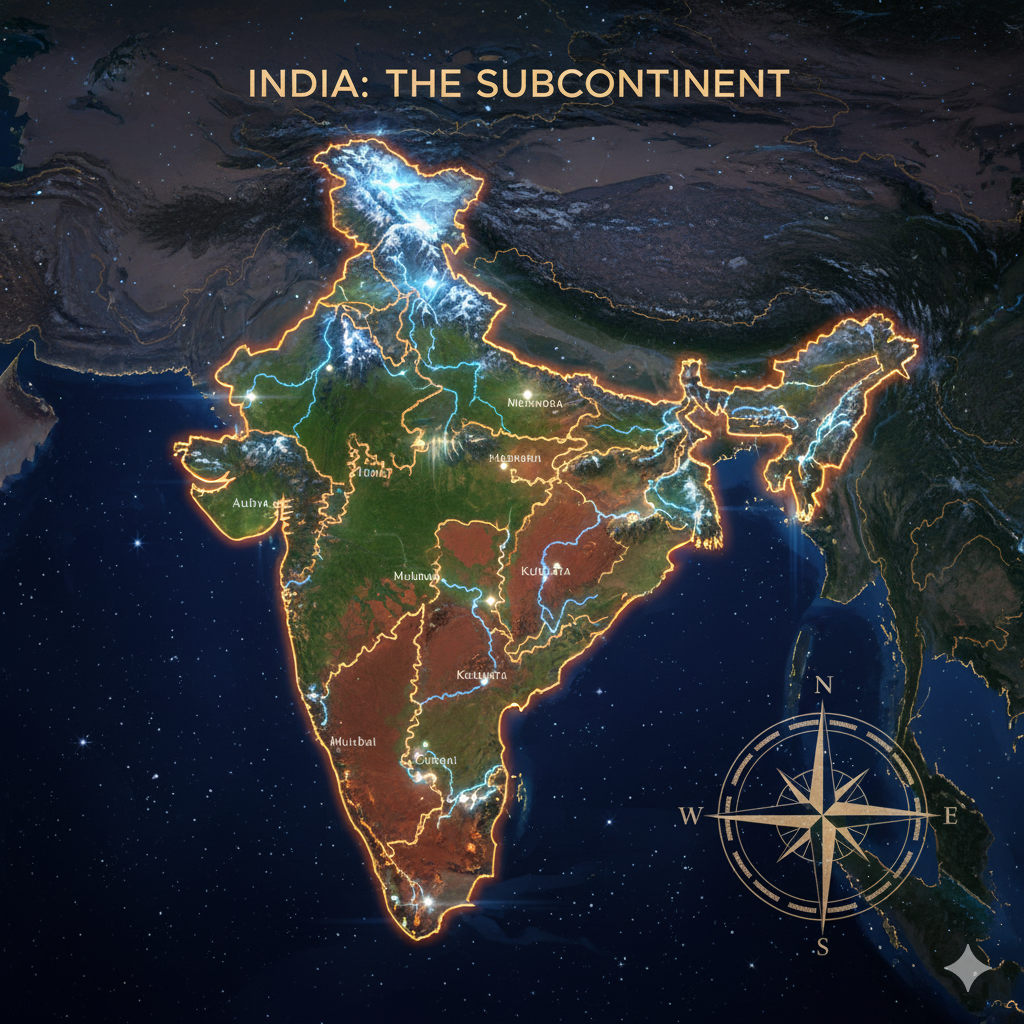Introduction
Mountains are some of the most influential geographical features on Earth, not only shaping landscapes but also profoundly affecting climate, weather patterns, and biodiversity. The alignment of mountain ranges determines the distribution of rainfall, temperature variations, wind patterns, and even the occurrence of deserts. Understanding the relationship between mountains and weather is crucial for geography, environmental science, and climate studies.
This article provides a detailed analysis of the major mountain ranges of the world, their alignment, and their effects on local and regional weather, with examples for clarity.
1. The Himalayas
Alignment
The Himalayas stretch in an arc from northwest to southeast across northern India, Nepal, Bhutan, and extending into Tibet. They are part of the young fold mountains formed due to the collision of the Indian Plate with the Eurasian Plate.
Impact on Local Weather
- Monsoon Regulation: The Himalayas act as a barrier to the southwest monsoon winds, forcing them to rise, cool, and release moisture, resulting in heavy rainfall in the northern plains and northeastern India.
- Rain Shadow Effect: The Tibetan Plateau, on the northern side, remains arid due to the blocking of moist monsoon winds.
- Temperature Variation: The elevation causes colder climates in the mountainous regions, supporting snow and glacier formation.
Example:
- Northern India receives heavy rainfall in summer due to the orographic lift caused by the Himalayas.
- The Ladakh region on the leeward side remains dry due to the rain shadow effect.
2. The Andes
Alignment
The Andes are the longest continental mountain range in the world, stretching over 7,000 km along the western coast of South America, from Venezuela to Chile and Argentina. They run parallel to the Pacific Ocean.
Impact on Local Weather
- Orographic Rainfall: Moist winds from the Pacific Ocean bring heavy rain to the western slopes of the Andes.
- Rain Shadow Effect: The eastern slopes and the regions inland, such as the Atacama Desert, remain extremely dry.
- Temperature Zoning: The high elevations create cooler temperatures, with permanent snow in the higher Andes.
Example:
- The Atacama Desert, one of the driest places on Earth, exists because the Andes block the moisture from the Pacific.
- The Amazon Basin receives rainfall from the eastern slopes, supporting dense tropical rainforest.
3. The Rocky Mountains
Alignment
The Rockies extend approximately 4,800 km from northern British Columbia in Canada to New Mexico in the United States, running north to south along the western part of North America.
Impact on Local Weather
- Precipitation Distribution: Moist winds from the Pacific Ocean rise over the western slopes, causing heavy precipitation.
- Rain Shadow Effect: The eastern plains of the United States remain drier because of the Rockies.
- Temperature Regulation: High altitudes lead to colder temperatures and snowfall, influencing local climates.
Example:
- Denver, located east of the Rockies, experiences semi-arid conditions due to the rain shadow effect.
- The western slopes, like in Colorado, receive significant snowfall, contributing to river systems.
4. The Alps
Alignment
The Alps stretch approximately 1,200 km across eight European countries: France, Switzerland, Italy, Germany, Austria, Slovenia, Liechtenstein, and Monaco. They run west-east in a crescent shape.
Impact on Local Weather
- Barrier to Winds: They block cold northern winds, keeping southern regions warmer.
- Orographic Rainfall: The northern slopes receive higher rainfall, supporting dense forests.
- Temperature Variation: Alpine regions experience snow cover for most of the year, affecting agriculture and tourism.
Example:
- Northern Italy, like the Po Valley, receives less rainfall due to mountains blocking moisture from the north.
- The Swiss Alps have heavy snowfall, making it a hub for winter sports.
5. The Urals
Alignment
The Ural Mountains run approximately 2,500 km from the Arctic Ocean in the north to the Ural River in the south, forming a natural boundary between Europe and Asia.
Impact on Local Weather
- Temperature Differences: The western slopes experience milder European weather, while the eastern slopes have colder Siberian climates.
- Barrier to Moisture: The mountains partially block moisture-laden winds from Europe, influencing precipitation patterns in western Siberia.
Example:
- The European side has more temperate forests and higher rainfall, while the Siberian side is colder and drier.
6. The Great Dividing Range
Alignment
The Great Dividing Range stretches over 3,500 km along the eastern coast of Australia from Queensland to Victoria.
Impact on Local Weather
- Orographic Rainfall: Moist winds from the Pacific Ocean cause heavy rainfall on the eastern slopes.
- Rain Shadow Effect: The western slopes and interior regions are much drier.
- Temperature Influence: Elevation causes cooler temperatures compared to coastal plains.
Example:
- The eastern slopes support rainforests in Queensland.
- The interior regions of New South Wales are semi-arid due to the rain shadow effect.
7. The Atlas Mountains
Alignment
The Atlas Mountains extend 2,500 km across Morocco, Algeria, and Tunisia in northwest Africa. They run roughly southwest to northeast.
Impact on Local Weather
- Mediterranean Influence: Northern slopes receive rainfall from Mediterranean winds.
- Desert Barrier: The southern slopes face the Sahara Desert and remain arid.
- Microclimates: The mountains create local climates suitable for agriculture in northern slopes and pastoralism in the south.
Example:
- The northern slopes of Morocco are fertile and support crops like olives and cereals.
- The southern slopes are dry, bordering the Sahara Desert.
8. General Impact of Mountain Ranges on Weather
- Orographic Rainfall: Mountains force moist air to rise, cool, and condense into precipitation. This explains high rainfall on windward slopes.
- Rain Shadow Effect: Leeward slopes remain dry as the air descends and warms, reducing rainfall.
- Temperature Variation: High altitudes result in lower temperatures and seasonal snow cover.
- Wind Patterns: Mountains alter local and regional wind directions, sometimes generating strong valley winds.
- Storm Formation: Mountains can influence cyclone and monsoon paths, enhancing rainfall in certain regions.
Global Examples:
- Himalayas: Control the South Asian monsoon.
- Andes: Create deserts like Atacama on the western side.
- Rockies: Influence the climate of North American plains.
- Great Dividing Range: Affects rainfall distribution in eastern Australia.
Conclusion
Mountain ranges are critical in shaping local and regional climates. Their alignment determines rainfall patterns, creates rain shadows, influences temperature distribution, and even affects ecosystems. From the Himalayas in Asia to the Andes in South America, mountains act as climatic regulators, water catchment areas, and biodiversity hotspots. Understanding the interplay between mountain alignment and weather conditions is essential for environmental management, agriculture planning, and disaster preparedness.
In summary, the world’s major mountain ranges demonstrate how topography can directly influence local weather, making them indispensable features in both physical geography and climate studies.




